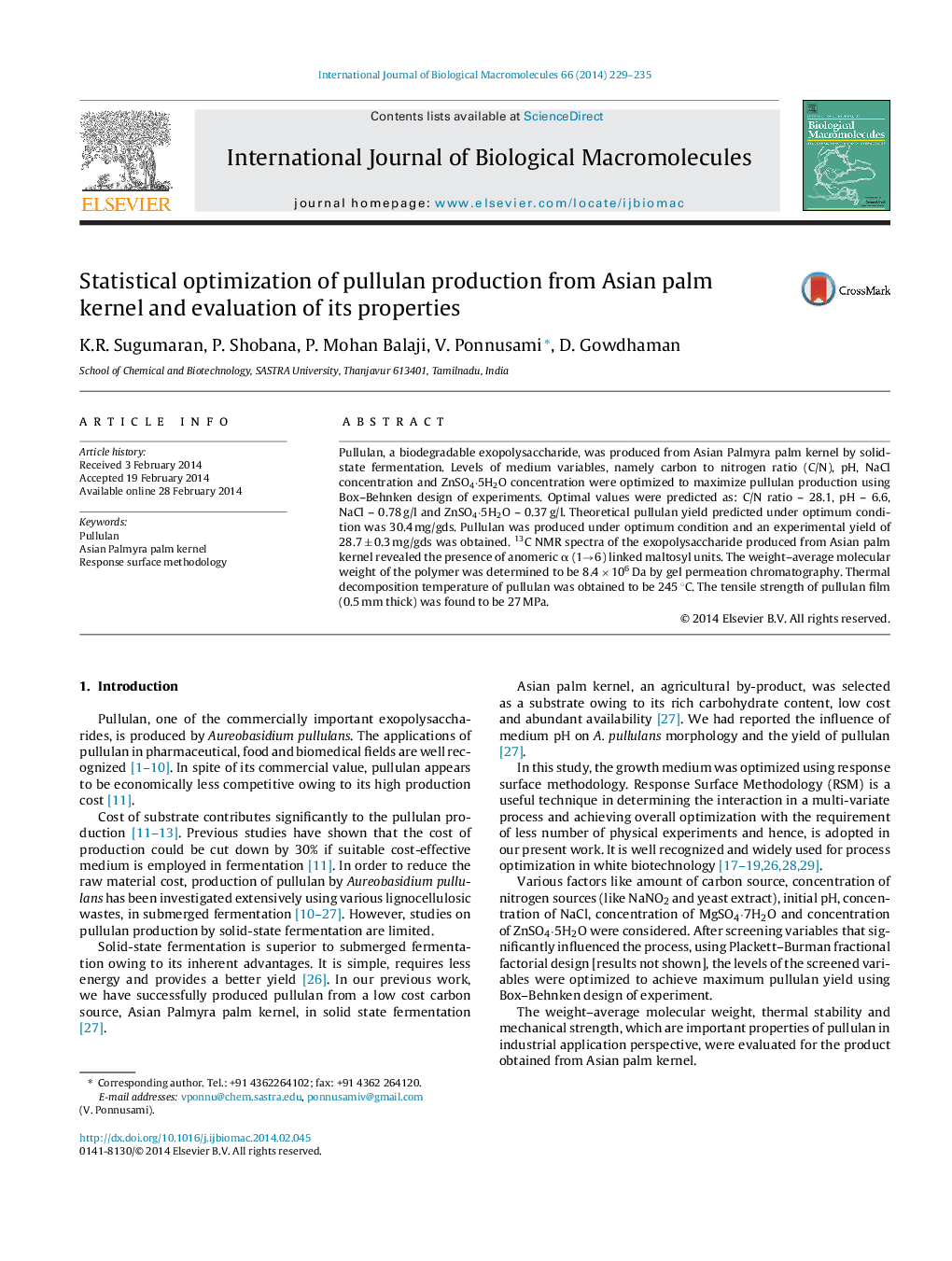| Article ID | Journal | Published Year | Pages | File Type |
|---|---|---|---|---|
| 1986850 | International Journal of Biological Macromolecules | 2014 | 7 Pages |
Abstract
Pullulan, a biodegradable exopolysaccharide, was produced from Asian Palmyra palm kernel by solid-state fermentation. Levels of medium variables, namely carbon to nitrogen ratio (C/N), pH, NaCl concentration and ZnSO4·5H2O concentration were optimized to maximize pullulan production using Box-Behnken design of experiments. Optimal values were predicted as: C/N ratio - 28.1, pH - 6.6, NaCl - 0.78 g/l and ZnSO4·5H2O - 0.37 g/l. Theoretical pullulan yield predicted under optimum condition was 30.4 mg/gds. Pullulan was produced under optimum condition and an experimental yield of 28.7 ± 0.3 mg/gds was obtained. 13C NMR spectra of the exopolysaccharide produced from Asian palm kernel revealed the presence of anomeric α (1â6) linked maltosyl units. The weight-average molecular weight of the polymer was determined to be 8.4 Ã 106 Da by gel permeation chromatography. Thermal decomposition temperature of pullulan was obtained to be 245 °C. The tensile strength of pullulan film (0.5 mm thick) was found to be 27 MPa.
Keywords
Related Topics
Life Sciences
Biochemistry, Genetics and Molecular Biology
Biochemistry
Authors
K.R. Sugumaran, P. Shobana, P. Mohan Balaji, V. Ponnusami, D. Gowdhaman,
